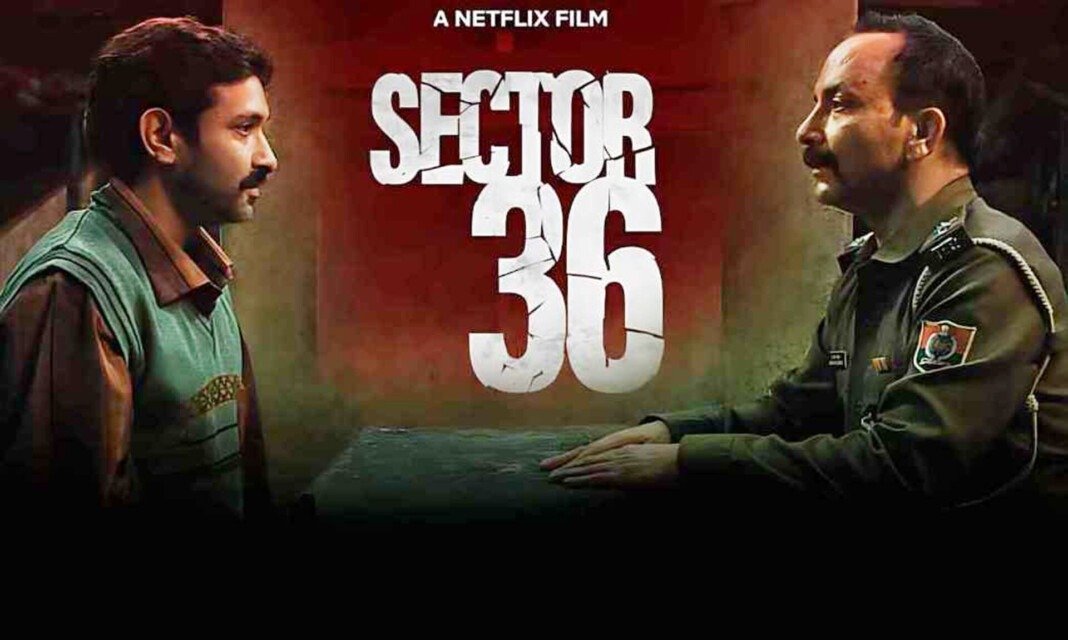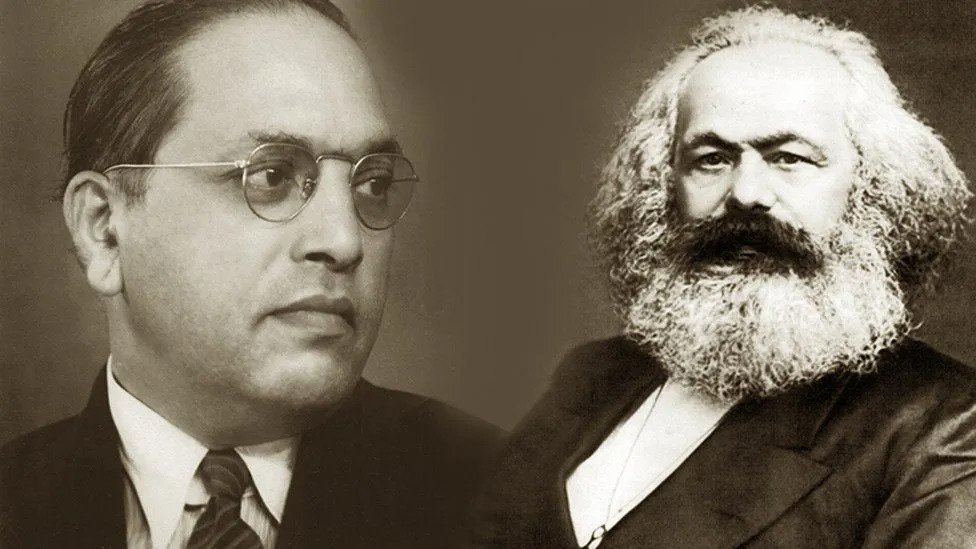By: Himangshu Ranjan Bhuyan
Netflix’s Sector 36 attempts to break the mold of conventional crime thrillers by offering a gritty, noir-like take on the pervasive corruption that lurks within Indian law enforcement and political systems. Directed by Aditya Nimbalkar, the film ambitiously sets out to peel back the layers of a morally ambiguous world where crime, justice, and corruption are inextricably entwined. However, while the film certainly has moments of tension, strong performances, and a visually compelling style, it is ultimately hampered by uneven pacing, underdeveloped characters, and a lack of narrative coherence that prevents it from becoming a truly gripping or profound experience.
The film centers on a missing person’s case that leads its protagonist, Officer Lokhande, played by Vikrant Massey, into a web of deceit and corruption. As Lokhande digs deeper, what starts as a routine investigation quickly spirals into a much larger conspiracy involving political players, organized crime, and the very law enforcement structure that he is a part of. Massey, known for his nuanced and understated performances, does his best to imbue Lokhande with a quiet sense of frustration and determination. His character is not the stereotypical larger-than-life hero often seen in Indian cinema, but a grounded, conflicted man attempting to navigate an increasingly corrupt world. Massey’s performance is undoubtedly one of the film’s highlights, with his subtle expressions and restrained emotional outbursts lending authenticity to his portrayal of a man gradually realizing the depths of the rot within the system.
Yet, despite Massey’s strong performance, the character of Lokhande remains somewhat elusive. The film teases the viewer with glimpses of his moral struggle, but never fully dives into his psyche. We are told that Lokhande is a man who wants to uphold justice, but the film does not explore why or what personal experiences have shaped his belief system. The lack of depth in Lokhande’s backstory leaves the audience with a character who, while competent and watchable, never fully comes to life. This is emblematic of one of Sector 36’s biggest problems – its inability to flesh out its characters beyond their archetypal roles.
Opposite Massey is Deepak Dobriyal, who plays a shadowy antagonist with ties to both the political and criminal underworlds. Dobriyal’s performance is subtle and menacing, but like Massey’s Lokhande, his character feels underwritten. We get only a surface-level understanding of his motivations and background, which makes it difficult to fully invest in his role as the film’s central villain. Dobriyal’s understated menace is effective in the moment, but his character’s lack of depth makes him feel more like a narrative obstacle than a fully realized person. This issue plagues many of the secondary characters in Sector 36, from corrupt police officers to political figures, who are introduced and then forgotten, leaving them feeling more like plot devices than integral parts of the story.
Thematically, Sector 36 aims to tackle the pervasive issue of corruption, particularly within Indian institutions of power. The film sets out to depict how deeply entrenched corruption is, not just within the police force but across all levels of society. The setting – a sprawling, unnamed city drenched in shadows and grime – effectively conveys the film’s bleak, cynical worldview. The cinematography, helmed by Siddharth Diwan, is one of the film’s standout features. The use of dimly lit alleys, rundown police stations, and claustrophobic interiors creates a sense of unease and suffocation, mirroring the moral decay that runs through the story.
However, while the film succeeds in creating a compelling atmosphere, it struggles to offer any fresh insights into the corruption it seeks to critique. The message that corruption is pervasive and entrenched is hammered home repeatedly, but the film does little to explore the personal or societal implications of this. The narrative, instead of digging into the nuances of how corruption affects individuals and communities, remains fixated on Lokhande’s investigation, which, while central to the plot, fails to evoke the necessary emotional or intellectual engagement. The film gestures toward broader social issues but never fully commits to exploring them, resulting in a narrative that feels surface-level in its critique of systemic injustice.
One of the film’s most significant flaws is its pacing. Sector 36 moves at a deliberately slow pace, which, in theory, should allow for a gradual build-up of tension and suspense. However, the film’s languid tempo often works against it, creating a sense of inertia rather than intrigue. The first half of the film, in particular, drags as it introduces various characters and subplots, many of which are not fully resolved or integrated into the main narrative. The slow pacing might have been effective if the film had focused more on character development or deepened its exploration of the moral dilemmas faced by its protagonist. But instead, the narrative meanders, and by the time the film reaches its climax, the emotional stakes have diminished.
The final act of Sector 36 attempts to deliver a payoff for all the slow build-up, but it falls short. The resolution feels rushed and unsatisfying, as though the film is hurrying to tie up loose ends without fully earning the dramatic weight of its conclusion. The central mystery, which initially promises to reveal the dark underbelly of political and criminal corruption, ends on a note that is neither surprising nor impactful. The film opts for a subdued, ambiguous ending, which may work for some viewers, but for others, it will feel anticlimactic, especially given the film’s slow lead-up.
The lack of a clear or emotionally resonant conclusion is emblematic of Sector 36’s larger structural issues. The film wants to be a gritty, realistic crime drama that exposes the failings of the justice system, but it lacks the narrative cohesion and character development necessary to fully succeed in this endeavor. There are moments where the film’s ambition shines through – scenes that hint at a deeper exploration of moral ambiguity and systemic failure – but these moments are fleeting. The film’s failure to develop its characters and maintain narrative momentum ultimately prevents it from being the impactful thriller it aspires to be.
That being said, Sector 36 is not without merit. The performances, particularly by Massey and Dobriyal, are strong, and the film’s atmosphere effectively captures the grim reality of its world. The cinematography and production design create a sense of place that feels both tangible and oppressive, adding to the film’s thematic concerns. Additionally, Aditya Nimbalkar’s direction shows promise, particularly in his ability to craft tension within individual scenes. However, these elements are not enough to compensate for the film’s broader issues with pacing, character development, and narrative coherence.
In conclusion, Sector 36 is a film that strives for greatness but falls short due to its structural flaws and underdeveloped characters. While the performances and visuals are commendable, the film’s uneven pacing and lack of narrative focus prevent it from being the hard-hitting, thought-provoking thriller it could have been. Sector 36 is ultimately a film of missed opportunities – a well-intentioned but flawed attempt to tackle the complexities of corruption and justice in modern India. While it may resonate with some viewers for its atmosphere and performances, it will likely leave others feeling unsatisfied and yearning for a more complete and engaging cinematic experience. (The Writer is CRCC of Nalbari Cluster, Biswanath Education Block, Education Department, Government of Assam)












